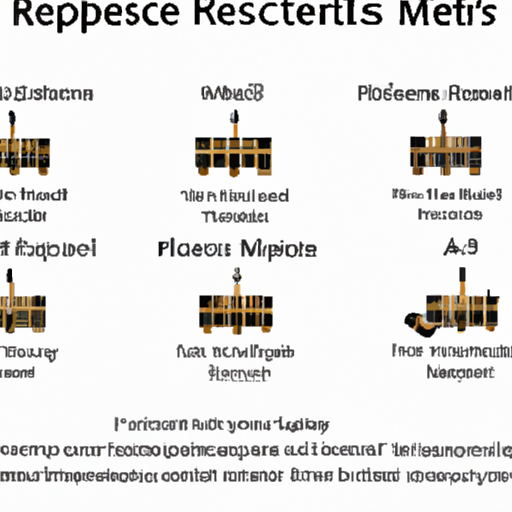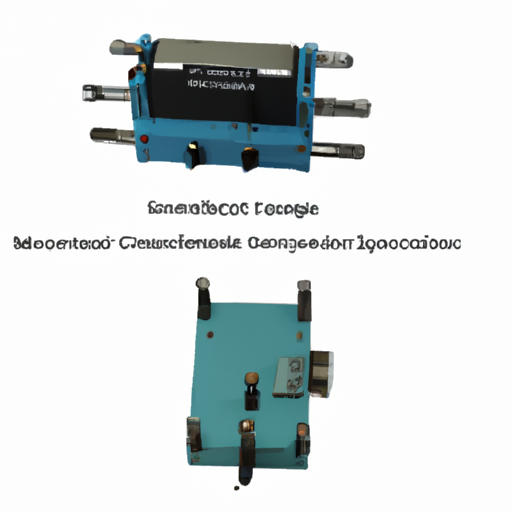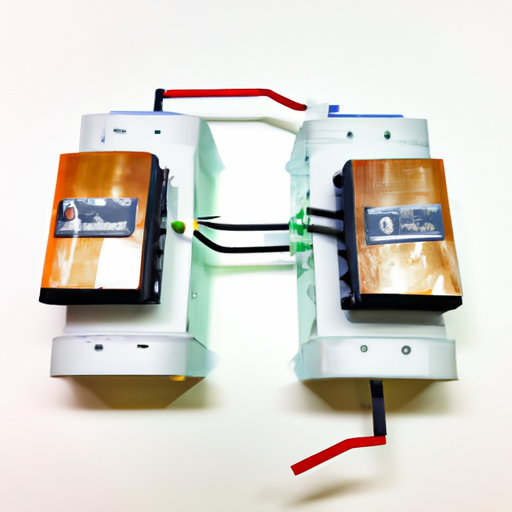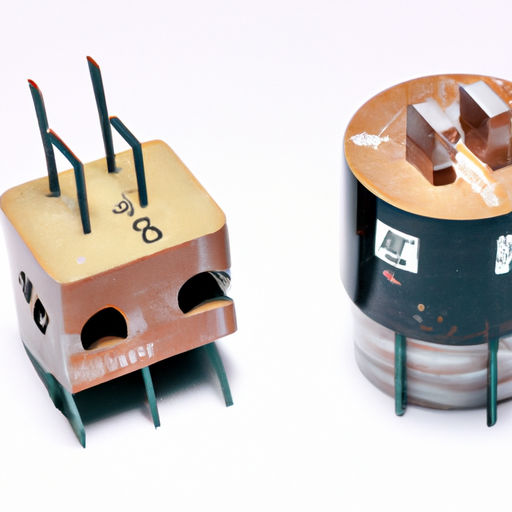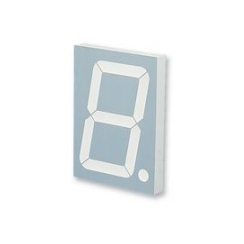What are the popular models of the 10 major mainstream resistor resistance values?
Popular Models of the 10 Major Mainstream Resistor Resistance Values
I. Introduction
A. Definition of Resistors
Resistors are fundamental electronic components that limit the flow of electric current in a circuit. They are essential for controlling voltage and current levels, ensuring that electronic devices operate safely and effectively. Resistors come in various types, sizes, and resistance values, each serving specific functions in electronic applications.
B. Importance of Resistance Values in Electronics
The resistance value of a resistor, measured in ohms (Ω), determines how much current will flow through it when a voltage is applied. Understanding these values is crucial for designing circuits that function correctly. Selecting the appropriate resistance value can affect everything from signal integrity to power consumption, making it a vital consideration for engineers and hobbyists alike.
C. Overview of the Article's Purpose
This article aims to explore the popular models of the ten major mainstream resistor resistance values. By examining each value, its applications, and the most commonly used models, readers will gain a deeper understanding of how to select the right resistors for their projects.
II. Understanding Resistor Resistance Values
A. Explanation of Resistance and Ohm's Law
Ohm's Law is a fundamental principle in electronics that states the relationship between voltage (V), current (I), and resistance (R). It can be expressed with the formula:
\[ V = I \times R \]
This equation illustrates that the voltage across a resistor is directly proportional to the current flowing through it and the resistance value.
B. The Role of Resistors in Circuits
Resistors serve multiple purposes in electronic circuits, including current limiting, voltage division, and signal conditioning. They can also be used to set bias points in transistors and to create timing circuits in conjunction with capacitors.
C. Common Applications of Resistors
Resistors are ubiquitous in electronic devices, from simple LED circuits to complex microcontroller applications. They are used in power supplies, audio equipment, signal processing, and more, making them essential components in virtually all electronic systems.
III. The 10 Major Mainstream Resistor Resistance Values
A. Overview of Standard Resistance Values
Resistors are often categorized into standard values based on the E12 and E24 series. The E12 series includes 12 values per decade, while the E24 series includes 24 values, providing a more precise selection for engineers. The ten major mainstream resistance values typically include: 1Ω, 10Ω, 100Ω, 1kΩ, 2.2kΩ, 4.7kΩ, 10kΩ, 100kΩ, 1MΩ, and 10MΩ.
B. Importance of E12 and E24 Series in Resistor Selection
The E12 and E24 series are crucial for standardizing resistor values, making it easier for designers to find suitable components. These series help ensure compatibility and availability across various applications, simplifying the design process.
IV. Detailed Analysis of Each Resistance Value
1. Applications
1-ohm resistors are often used in power applications, such as current sensing and load testing. They can help monitor current flow in high-power circuits.
2. Popular Models
Common models include the Vishay Dale WSL series and the Ohmite 1W series, known for their reliability and precision.
1. Applications
10-ohm resistors are frequently used in audio applications and as pull-down resistors in digital circuits.
2. Popular Models
Popular models include the Yageo CFR series and the Vishay MRS series, which offer good stability and low noise.
1. Applications
100-ohm resistors are commonly used in signal processing and as current limiting resistors in LED circuits.
2. Popular Models
The Panasonic ERJ series and the Vishay MRS series are well-regarded for their performance in this range.
1. Applications
1k ohm resistors are among the most widely used values, found in everything from pull-up resistors in microcontroller circuits to voltage dividers.
2. Popular Models
The Yageo CFR series and the Vishay MRS series are popular choices, known for their accuracy and reliability.
1. Applications
10k ohm resistors are often used in sensor applications, such as thermistors and potentiometers, as well as in audio circuits.
2. Popular Models
Common models include the Panasonic ERJ series and the Vishay MRS series, which provide excellent performance and stability.
1. Applications
100k ohm resistors are frequently used in high-impedance circuits, such as input stages of amplifiers and in analog signal processing.
2. Popular Models
The Yageo CFR series and the Vishay MRS series are popular for their precision and low noise characteristics.
1. Applications
1M ohm resistors are commonly used in high-impedance applications, such as in the input stages of operational amplifiers and in sensor circuits.
2. Popular Models
The Panasonic ERJ series and the Vishay MRS series are well-known for their reliability in this resistance range.
1. Applications
2.2k ohm resistors are often used in timing circuits and as pull-up resistors in digital applications.
2. Popular Models
The Yageo CFR series and the Vishay MRS series are popular choices for their stability and performance.
1. Applications
4.7k ohm resistors are commonly used in audio applications and as biasing resistors in transistor circuits.
2. Popular Models
The Panasonic ERJ series and the Vishay MRS series are frequently used for their reliability and accuracy.
1. Applications
10M ohm resistors are typically used in high-impedance applications, such as in sensor circuits and as input resistors in amplifiers.
2. Popular Models
The Yageo CFR series and the Vishay MRS series are well-regarded for their performance in high-resistance applications.
V. Factors Influencing Resistor Selection
A. Tolerance and Precision
Tolerance refers to the allowable deviation from the specified resistance value. Precision resistors have tighter tolerances, making them suitable for applications requiring high accuracy.
B. Power Rating
The power rating of a resistor indicates how much power it can dissipate without overheating. Selecting a resistor with an appropriate power rating is crucial to prevent damage in high-power applications.
C. Temperature Coefficient
The temperature coefficient indicates how much a resistor's value changes with temperature. Low-temperature coefficient resistors are preferred in precision applications to maintain stability.
D. Physical Size and Packaging
The physical size and packaging of resistors can affect their application. Surface-mount resistors are commonly used in compact electronic devices, while through-hole resistors are often found in larger circuits.
VI. Conclusion
A. Summary of Key Points
In this article, we explored the popular models of the ten major mainstream resistor resistance values, highlighting their applications and commonly used models. Understanding these values is essential for selecting the right resistors for various electronic projects.
B. The Importance of Choosing the Right Resistor
Choosing the appropriate resistor is critical for ensuring the functionality and reliability of electronic circuits. Factors such as tolerance, power rating, and temperature coefficient should be considered to achieve optimal performance.
C. Future Trends in Resistor Technology
As technology advances, we can expect to see improvements in resistor materials and designs, leading to more efficient and compact components. Innovations in resistor technology will continue to play a vital role in the evolution of electronic devices.
VII. References
A. Suggested Reading
- "The Art of Electronics" by Paul Horowitz and Winfield Hill
- "Electronic Principles" by Albert Malvino and David Bates
B. Industry Standards and Guidelines
- IEC 60115: Resistors for use in electronic equipment
- EIA-198: Standard for Resistor Values
C. Manufacturer Resources
- Vishay Intertechnology
- Yageo Corporation
- Panasonic Corporation
This comprehensive exploration of resistor resistance values provides a solid foundation for understanding their applications and selecting the right components for electronic projects. Whether you're a seasoned engineer or a hobbyist, knowing the popular models and their uses will enhance your ability to design effective circuits.

